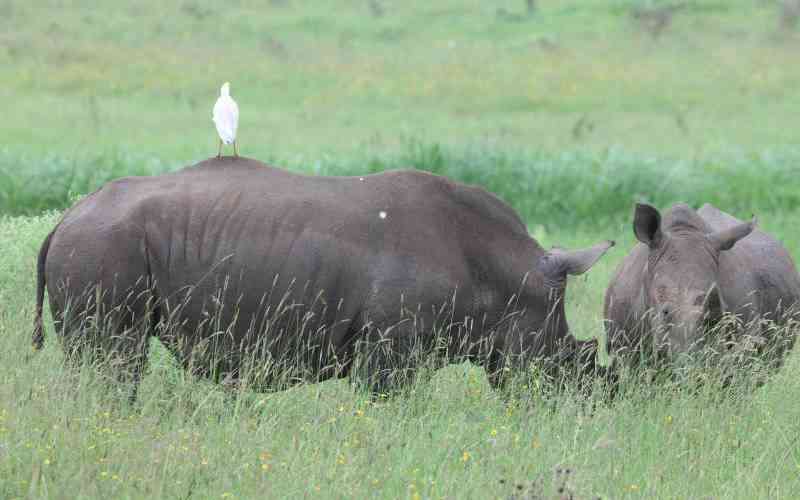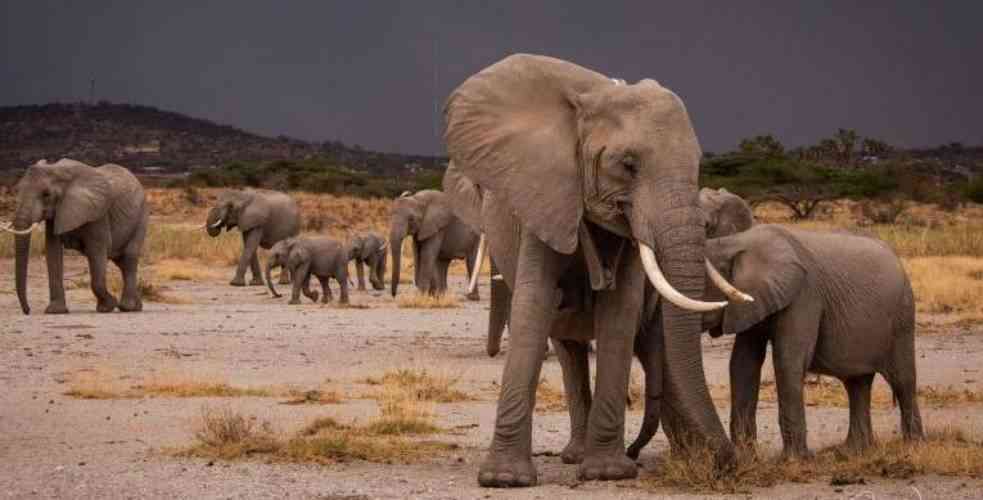A poaching syndicate in Nanyuki is believed to have assassinated a turncoat poacher suspected of having taken part in the killing of four rhinos at Ol Jogi Ranch.
According to Poaching Chronicles, an online journal run by Kenyans United Against Poaching (Kuapo), Yakub, the suspected poacher, was allegedly ‘arrested’ and killed by people dressed in what witnesses say were KWS uniforms.
His body, which was burned with acid, was found dumped in Maua, Meru and buried before an autopsy or investigations were conducted.
The same journal reports that when poaching overlords give orders, elephants and rhinos are located and targeted.
Trusted insiders in private game ranches and conservancies and trekkers who pose as local livestock herders identify targeted animals and inform retired rangers and policemen or active members of the security forces.
These are the ones who study the security arrangements in the ranch or conservancy, provide guns and plan and execute the killings, working in cahoots with security officers in the ranches and conservancies.
Poached animal parts are them stored in safe houses where packaging is done, sometimes in containers belonging to road construction companies, and later shipped to selected destinations in the Far East through Kenya’s exit ports.
The police, particularly those manning road blocks, as well as security personnel in charge of the port, are silenced with ‘kitu kidogo’ “whose amount is pre-determined even before the shipping.”
Other sources say that whatever information different members of the gang have depends on how high up they are in the poaching echelons or how trusted they are, pointing to a ruthless mafia-like syndicate.
Members are also said to go through repeated testing to prove their trustworthiness. They are also under constant surveillance by more trusted and senior members of the gangs. Chilling threats are also relayed to all gang members.
This elaborate organisation has ensured that very little of the poaching operations is given away particularly, during the planning, killing and shipping of the animal parts to international destinations.
The chilling threats are meant to instill maximum discipline and fear in members and has ensured that the identity of the poaching kingpins, who are suspected to be politicians and business people working closely with senior government officials, is not revealed.
What is baffling is that poaching has been going on in game ranches with elaborate and effective security arrangements that cannot be easily penetrated by ‘outsider’ poachers.
For instance, the 58,000-acre Ol Jogi Ranch, where the four rhinos were killed last month, is surrounded by an electric ring-fencing system that is said to offer “maximum” protection against poaching. In its website, the ranch says it has put in place an extensive monitoring and security system which allows wildlife to migrate through it “whilst still prohibiting movement of rhinos.”
Such elaborate security is also installed at the world-famous Lewa Wildlife Conservancy, which is headed by former British soldier Mike Watson, and has a staff force of 150 men, 30 of whom are armed. The conservancy also has highly-trained tracker dogs and a radio system capable of receiving signals within a radius of 300 kilometres. But even with such elaborate security systems, Lewa has been losing wildlife to poachers. At one point in early December 2012, four black rhinos were killed.
Stay informed. Subscribe to our newsletter
Ranches and conservancies aside, more baffling is the ease with which poachers strike within national parks protected by KWS game rangers such as Nakuru, Nairobi and the Tsavos. An inside job? Ineptitude? Or both?
 The Standard Group Plc is a
multi-media organization with investments in media platforms spanning newspaper
print operations, television, radio broadcasting, digital and online services. The
Standard Group is recognized as a leading multi-media house in Kenya with a key
influence in matters of national and international interest.
The Standard Group Plc is a
multi-media organization with investments in media platforms spanning newspaper
print operations, television, radio broadcasting, digital and online services. The
Standard Group is recognized as a leading multi-media house in Kenya with a key
influence in matters of national and international interest.
 The Standard Group Plc is a
multi-media organization with investments in media platforms spanning newspaper
print operations, television, radio broadcasting, digital and online services. The
Standard Group is recognized as a leading multi-media house in Kenya with a key
influence in matters of national and international interest.
The Standard Group Plc is a
multi-media organization with investments in media platforms spanning newspaper
print operations, television, radio broadcasting, digital and online services. The
Standard Group is recognized as a leading multi-media house in Kenya with a key
influence in matters of national and international interest.








